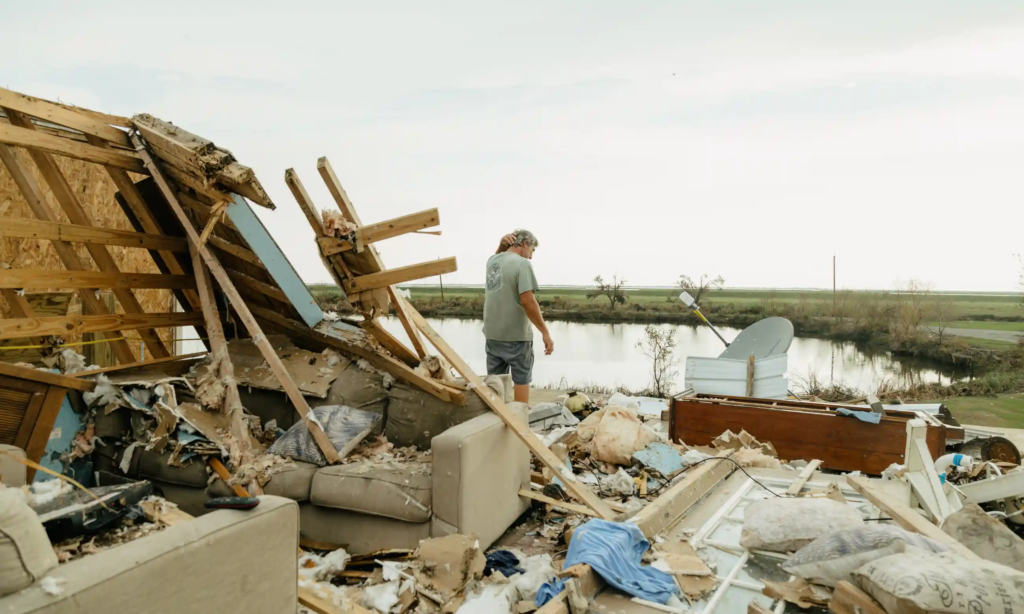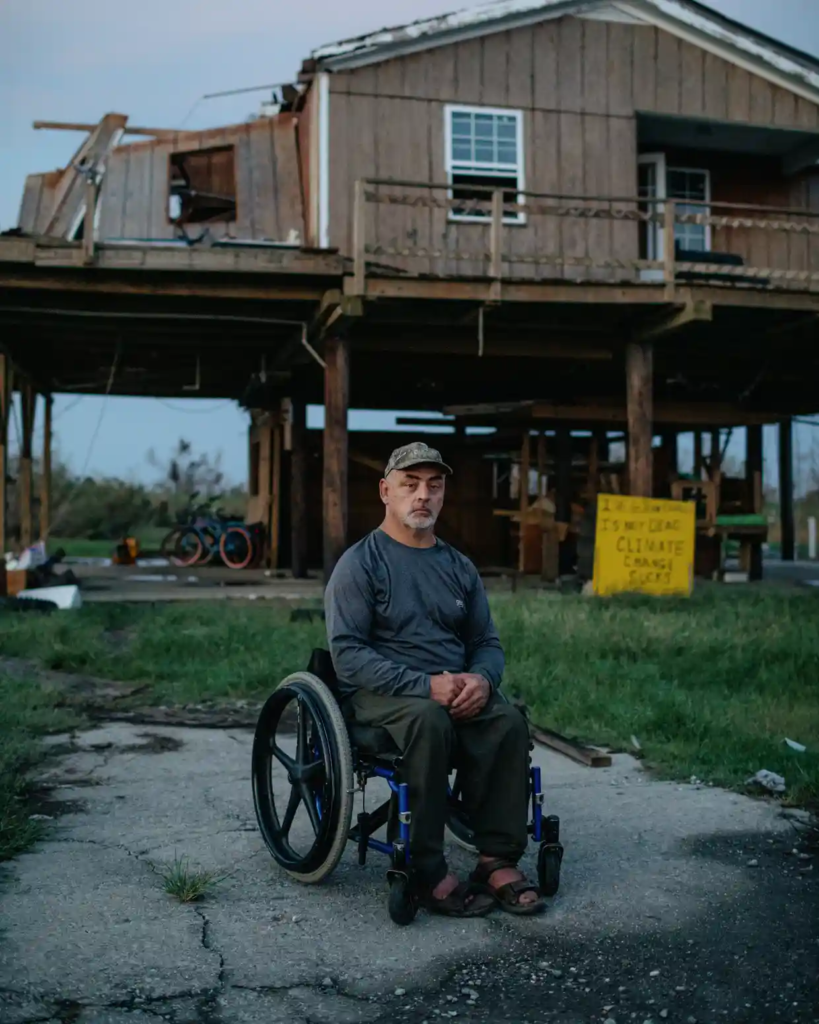Out on the frontiers of the Louisiana coastline, amid winding bayous, battered island roads and sinking land, a swath of fresh devastation for this region’s overlooked Indigenous tribal communities.
Amid the rapid depletion of their land, rising sea levels and coastal erosion, Hurricane Ida pummeled the small communities of Pointe-aux-Chenes and Isle de Jean Charles, home to a number of south-east Louisiana’s coastal tribal groups.
The area endured some of the hurricane’s worst destruction, with many who returned to inspect the damage describing the category 4 storm as the worst they had ever endured during lifetimes punctuated by extreme weather.
Ida also revived questions that many people here have been grappling with for years: whether to stay or go, retreat inland or remain to rebuild in an area already facing the brunt of the climate crisis.

n Isle de Jean Charles, reached on a roadway surrounded by water that was constructed in 1953, the silence was broken only by the sound of cicadas and mosquitoes. Many homes had been toppled from their stilts, with over half the island’s housing completely destroyed. With no power or running water, it appeared only two people, of the island’s roughly 40 remaining residents, were currently living there permanently.
Elizabeth and Edison Dardar Sr, both 72 and elders in the island’s Biloxi-Chitimacha-Choctaw Tribe, returned just a few days after evacuating. They were living under their severely damaged home beneath a tented blue tarp. Propane and food were running low, but this was not the first time their home had been destroyed by storms. They hoped to rebuild.

Edison, a retired fisherman, sat straight shouldered and recounted his fondest memories of the island, on which his father and grandfather also lived.
“It’s good land,” he said. “People would garden – green beans, lima beans, tomatoes and peas, but then the salt water started rising up.”
Despite the destruction here, there was no question the couple, married 53 years, would stay.
“People have been saying we shouldn’t be here for 50 years,” said Elizabeth. “But if we moved, other people would take our land.”Advertisement
A few homes down the island’s only roadway, Chris Brunet, a councilman in the tribal government, had evacuated to the closest city, Houma, also still without power. He returns when possible and attempts to clean up his home, which remains partially intact. But with no power, the wheelchair elevator is not operational so he works underneath the stilting.


In 2016 Isle de Jean Charles became the first community in America to receive federal funding for a sweeping inland retreat due to the effects of the climate crisis. The island’s land mass has decreased by 98%, according to the tribal council, amid flooding, erosion and expansion of oil and gas infrastructure.
Brunet has taken up the option of a new home further inland, but will continue to live here for as long as possible, irrespective of Ida’s damage.
“I want to rebuild,” he said. “I want to hold on to it for as a long as I can. Me selling it or losing it surely ain’t going to change what’s going on out there. It won’t stop how the environment is changing.”
Brunet had returned on Wednesday to place a new sign at the foot of his property. It read “ISLE DE JEAN CHARLES IS NOT DEAD. CLIMATE CHANGE SUCKS.”

As he filled it in, black marker against a bright yellow board, he reflected on the devastation – the homes, the trees, he had known his entire life now crushed on top of each other.
“Climate change has forced us to make decisions that we never wanted to make,” he said. “For me Ida is not the end, it’s just a change.”
On the other side of the island road in lower Pointe-aux-Chenes, there was equal devastation. Elders here assessed that just five of the 40 homes on the west bank of the bayou remained habitable. Many had not recovered from a battering last year during Hurricane Zeta.

At Earline Naquin’s trailer home, remnants of the blue roofing tarps still in place after last year’s storm lay scattered over the muddy ground. The family had applied for aid from the Federal Emergency Management Agency (Fema) last time and been rejected. Another initial application after Ida had also been rejected too, despite the complete decimation. They planned to appeal, but Earline, a tribal elder and sister of the Pointe-aux-Chien tribal chief, had already made up her mind. She would leave the community she had lived in her whole life and find somewhere further inland to live permanently.
“We’re getting up in age,” she said. “And we just don’t have the money to clean up and buy things to rebuild any more.”
Her sister and three brothers who live further up the bayou also lost everything.




